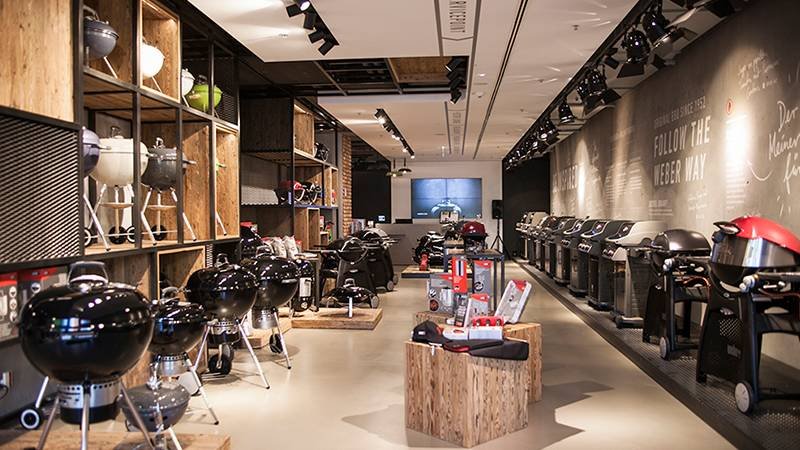grilling using charcoal Drawing techniques: using carbon, charcoal, and graphite.
by:Longzhao BBQ
2019-08-24

The secret of drama, no shine, black and white pencil drawing.Hello, everyone. welcome...There you will find dramatic art pencil strokes.--xa0Where my theme needs it, I mainly use carbon pencils with charcoal and graphite accents.--xa0--xa0The combination of these three pencils is the subject of this lens....The darker you go, the greater the light!--xa0I will deal with the "curse" first and then do some tutorials....And other surprises.I hope you can check the updates on a regular basis.With your question.Light or not?When I was a child, I drew pictures and picked them up again in 2003.I had no formal art education, so I took some basic painting classes and workshops.I like the way black and white art is not complicated...I feel that the lack of color allows the audience to see the color in their own minds.Using graphite, I improved my technique and grew into a pencil artist...However, I hate "graphite glow ".I want to see the deep dark spots that pull the eyes into the painting and push the shadows back, but the light of graphite pulls everything forward.I know that some graphite artists think that glow is a feature of the media, ignoring the glow.It's getting more aggressive for me.The carbon pencil is my new "graphite "......It turned out that this workshop was a turning point in my career as a pencil artist.It was here that I was introduced to the gorgeous carbon pencil.I turned what I learned in the workshop into my own.I have expanded my knowledge and developed my own style...I have never stopped painting since then!This difference cannot be denied...Take a closer look at the pictures posted here....You will notice that there is nothing bad about my pencil drawing.They are dramatic...Deep darkness, subtle MiddleShades and bright highlights, like the "fork and spoon club" in the picture below.I know you can't see it on your computer screen, but trust me, there's not an ounce of unnecessary "shiny" anywhere ".It's all about charcoal pens...Combine charcoal with graphite, where they are needed to accurately represent the texture.Since most pencil artists only use graphite, I may be in a difficult battle here and will most likely put up a few feathers.If so, please forgive me;But when the carbon pencil touched the paper for the first time, I fell in love with it.I think you can say it has me when "Hello.The graphite pencil is used for the highest part of the two fork handles and goes down the center of the spoon handle, pulling the area forward using the natural reflection properties of graphite.Carbon pencil is used in all deep shadow areas, and even most middle shadow areasTone, push them back.Carbon does not shine...Therefore, the eyes will not be confused by the "shiny" silverware and the "shiny background.What makes these three pencils so different from each other?Carbon, charcoal and graphite have their own features...It's different to have them work together on paper.Graphite pencil...Why does it shine?When used to render a delicate texture, it is barely noticeable, but it gets darker as the shadow area gets darker...There it is looking back at us.No matter how we change our technology, it is still illusory not to create something that does not reflect our deep, rich, dark.This is the culprit...A single particle is "flat", causing the light to reflect back from the graphite.The reaction of graphite to light is always the same...The secret is for your benefit.Carbon pencil...If you ever light a wooden match..The soft black kerosene powder at the end is carbon.I'm not sure where the things in the pencil came from!Some say it's a combination of charcoal and graphite, others say it's just carbon with adhesive.All I know is that the carbon pencil is as smooth as silk on paper.Because the powder carbon particles are soft and irregular...When pushed to the darkest value, carbon does not reflect light like graphite.So there is no light.Charcoal pen...Back to the wooden race again.Imagine charcoal as a burnt black part of a wooden matchstick.Individual particle sizes and shapes found in charcoal pencils are irregular...Sometimes even a little rough.When light hits these charcoal particles, it bounces back in many different directions.This means that, like carbon, charcoal has no reflective glare associated with graphite.GRAPHITE...Like a quiet, timid child ".Now that we understand the basic features of these three pencils, we need to learn how to better handle their respective "personalities "."Quiet and timid people "...Graphite reminds me of the quiet, timid child in the classroom.Don't explain this as graphite can't do great things!Graphite is the perfect pencil for the initial layout of the drawing.You can make the most delicate texture with graphite and it does a better job than the other two pencils.Graphite can be applied directly to the paper with a variety of mixers to achieve subtle value changes...For depicting subtle changes, the weight of carbon is many times, and the charcoal is rough.The reflective properties of graphite are ideal for rendering smooth and shiny objects such as glass or metal.I also use it to cover the white color of my eyes, to paint a smooth fabric and to express the light on the faces of women and children.When an object rendered with graphite is placed next to carbon or charcoal in the drawing...The graphite part will always move forward.One of the major defects of graphite is its glow, making it possible to project shadows or dark backgrounds to reflect more light than the main body.CARBON...Like "strong-The wayward child "has a softer side to his nature.Now that we understand the basic features of these three pencils, we need to learn how to better handle their respective "personalities ".Willful softNATURED ONE...The carbon pencil reminds me of a strong-willed child whose personality hides a softer place and has the right direction, which is really sweet!Unlike charcoal, this pencil will create the darkest darkness to date, which is velvety smooth.Because the particles are small and irregular, carbon can be used no matter where you use graphite...Remember that there is no reflection to advance your theme when using graphite.Carbon can be painted directly on paper using a pencil in the darkest darkness, or on a more subtle texture with a blender or brush.Carbon is warmer in tone than graphite or charcoal.Some carbon-branded pencils, combined with creamy paper, produce a pleasant, very deep, almost dark brown tone.Carbon is not a medium that can be used.Unlike graphite, the tone of carbon is different...It is black and has a certain hardness.When applied directly on paper with a pencil...You can forget to delete it!When applied with a blender, the effect will not be much better unless you are very light.I suggest that you have a precise layout drawing with shadow shapes included.See: example of this layout.CHARCOAL...Like "strong-"Will child" using a rough expression ".Now that we understand the basic features of these three pencils, we need to learn how to better handle their respective "personalities "."Willful man, there is a rough side to his nature "...Charcoal reminds me of strength.Willful children occasionally say something shocking.The child once taught "when and how to express himself" with great potential!Charcoal, like carbon, is the pencil you want to use for being rich, not richReflective darksBut remember this...\ "Due to the size and shape of the charcoal particles, the tones produced will have more texture than the carbon.Therefore, charcoal is best suited to draw themes with more textures.Soft charcoal produces a rougher texture than hard charcoal.I chose to use charcoal in order to increase this texture...Use it for cloth with rough texture, wood, concrete, portrait when subject skin color is rough and background when more texture is needed.See: examples of charcoal Cowboys.The tone value of charcoal is similar to that of graphite...The cooler side.If you have two dark objects of the same color close to each other, then it is enough to separate them with charcoal and carbon.Charcoal can be applied directly on paper or on paper with a blender or brush...Always add depth using textures.As with carbon, the direct pencil application is difficult to remove.Accurate initial drawing is recommended.You Can Draw...You Can Do It!If you are here, you either draw now or want to draw.I said encourage.Read and study the works of other artists and never stop painting...You Can Do It!Miss Mouse...Miss Mouse is the cat near us.We say she is a "free spirit ".She never gets anyone too close and only shows up if she thinks there is a meal for her.On this day, I used my telephoto lens to take a wonderful picture of her "shopping" for her own meals.Squat on the grass and follow a bird...All you can see is her head.She must have lunch in her head.My goal is to capture the intensity I see in her eyes...This is done by applying multi-layer carbon with the stumps and then removing and re-Apply carbon.I also added a bit of graphite because of its reflective properties.All of this and a lot of patience make you see the end result here.The links listed below are mini tutorials.I try to describe as much as possible...Instruct me the time, way and reason for using carbon, charcoal or graphite in each drawing.You can also find a list of materials for each tutorial.If you have any questions, please contact me...I 'd be happy to help.The last two links are tutorials for two very special guest artists.Both JD Hillberry and Mike Sibley are pencil Masters...Their reputation is heard all over the world...Their workshop was sold out soon...Every serious pencil artist has their books in his library.Have you ever thought about what exactly the artist's work area looks like?Here it is...You can see some of my drawing materials on the table, or even a preview of the new "eye tutorial" I 've been working on.Click on this link...Found in my painting studio.Learn more about where they can buy.Wine Country...The last reference photo of wine country was done out of a desire to draw an ordinary Still Life arrangement from an unusual angle.The bottle began to sweat after sitting for so long...Create a wonderful add size for the finished drawing.Each small drop is rendered separately...Use graphite as a "raised" drop and carbon for edge shadows.This is not difficult...You just need to remember to think about the inherent qualities of the medium you are using.Do you want the element to push forward or back?You can do that!Do you have any questions?Send me an e-mail.Please contact me at the link below.I check my email every day and promise to respond in a timely manner.My "inbox" is always on.No problem. it's too small.If I don't know the answer, I will find someone who knows the answer.If you like the lens and want to see it more like it...let me know.The comment section is open to everyone.Your opinion is very important.What do you think of the information you found here?..was it helpful?Is it simple and clear?Do you want to know more?Would you recommend this lens to your friends?...Tell me what you think.Your comments will help me improve this shot for others.
Custom message








